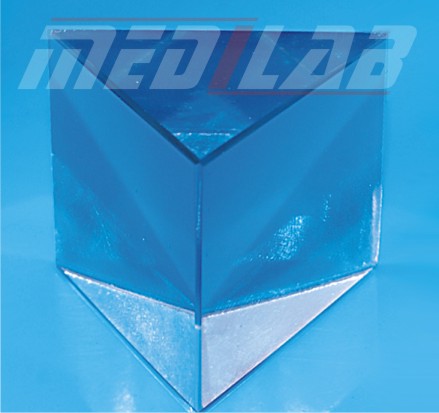Description
A lab prism is a transparent optical element made of glass or plastic that can split white light into its component colors or bend light rays through refraction. Prisms are used in scientific experiments and optical instruments such as microscopes, telescopes, and cameras to manipulate light and create precise images.
Lab prisms come in various shapes, but the most common is the triangular prism, which is made up of two triangular bases and three rectangular sides. When a beam of white light enters a prism, the different colors of the light refract, or bend, at different angles, causing the light to split into its component colors, which is called dispersion. This is the same principle that causes rainbows to form in the sky.
Prisms can also be used to bend light rays by refraction, which causes the light to change direction as it passes through the prism. This property is useful for correcting certain types of vision problems, as well as for creating magnified images in microscopes and telescopes.
In addition to triangular prisms, there are other types of prisms such as rectangular, pentagonal, and hexagonal prisms. Each type of prism has its own unique properties and uses in scientific experiments and optical instruments.







